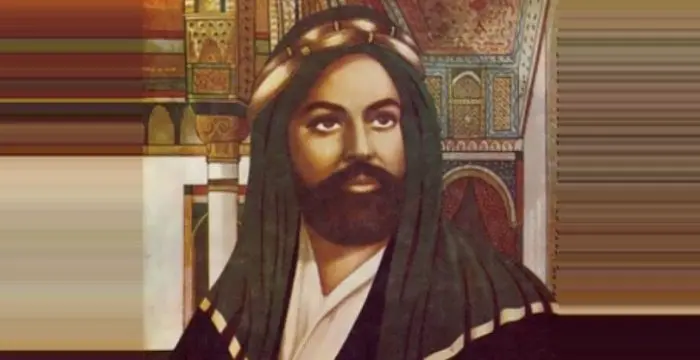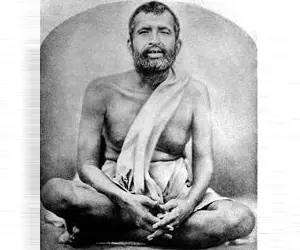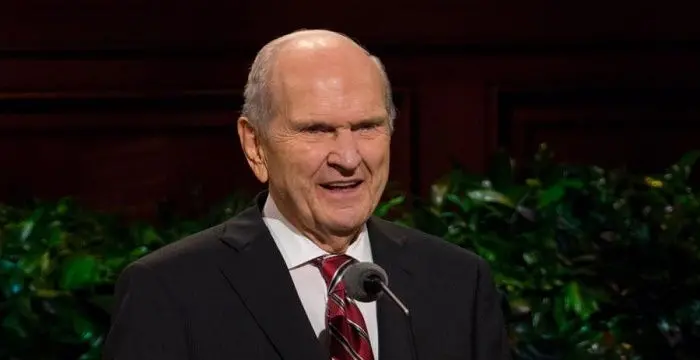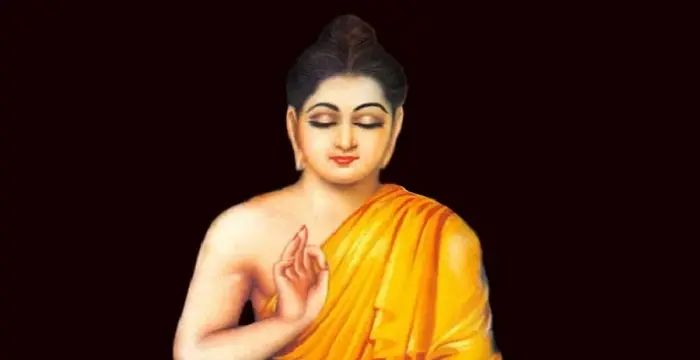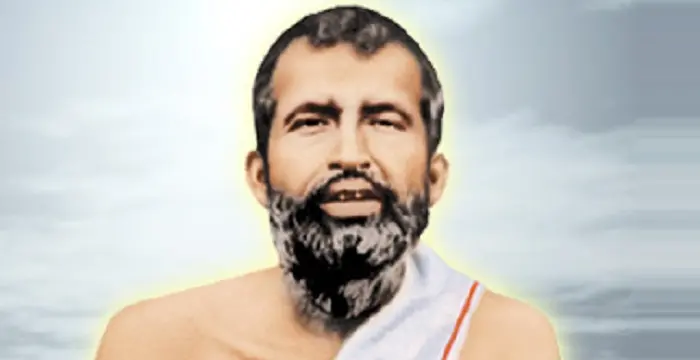
Ramakrishna Paramhamsa - Religious Leaders, Family and Facts
Ramakrishna Paramhamsa's Personal Details
Ramakrishna Paramahamsa was a highly revered Indian mystic during the 19th century
| Information | Detail |
|---|---|
| Birthday | February 18, 1836 |
| Died on | August 16, 1886 |
| Nationality | Indian |
| Famous | Leaders, Spiritual & Religious Leaders, Religious Leaders, Spiritual |
| Spouses | Saradamani Mukhopadhyaya (later known as Sarada Devi) |
| Siblings | Rameswar, Ramkumar |
| Known as | Gadadhar Chattopadhyay |
| Birth Place | Kamarpukur |
| Religion | Hinduism |
| Gender | Male |
| Father | Kshudiram Chattopâdhyâya |
| Mother | Chandramani Devî |
| Sun Sign | Aquarius |
| Born in | Kamarpukur |
| Famous as | Spiritual & Religious Leader |
| Died at Age | 50 |
// Famous Spiritual
Prophet Muhammad
Prophet Muhammad was the founder of Islam, one of the most widespread religions in the world. This biography profiles his childhood, life story, achievements and more.
Murad IV
Murad IV was one of the mighty Sultans in the history of the Ottoman Empire. This biography profiles his childhood, family, accession, rule, administration and timeline.
Eckhart Tolle
Eckhart Tolle is a well-known spiritual leader, and author. Check out this biography to know about his childhood, family, personal life, spiritual awakening, etc.
Ramakrishna Paramhamsa's photo
Who is Ramakrishna Paramhamsa?
‘If you must be mad, be it not for the things of the world. Be mad with the love of God.’ This quote by Ramakrishna Paramahamsa aptly describes his life as a whole. An astute believer in God, he was one of the immaculate figures of the 19th century who played a quintessential role in the Bengali Renaissance. A child prodigy, his parents experienced spiritual vision while he was in womb and as expected, he started experiencing mystical and paranormal forces while he was still an infant. All through his life, he was mentored by various gurus. While Bharavi Bhakti taught him the Tantra and Vaishnavi bhakti, Totapuri was influential in teaching him the principles behind Advaita Vedantin through which he attained the purest form of trance or nirvikalpa Samadhi. Interestingly, unlike other religious leaders of his time, Ramakrishna was not biased and acknowledged all forms of worship, form and formless and all types of religion. He was of the belief that all religions, whether Hinduism, Islam or Christianity professed and lead to one God. His legacy was taken forward by his most noted disciple, Swami Vivekananda who became his successor. Vivekananda immortalized the offerings and teachings of Ramakrishna by establishing the Ramakrishna Mission and Ramakrishna Math.
// Famous Religious Leaders
Prophet Muhammad
Prophet Muhammad was the founder of Islam, one of the most widespread religions in the world. This biography profiles his childhood, life story, achievements and more.
Murad IV
Murad IV was one of the mighty Sultans in the history of the Ottoman Empire. This biography profiles his childhood, family, accession, rule, administration and timeline.
Eckhart Tolle
Eckhart Tolle is a well-known spiritual leader, and author. Check out this biography to know about his childhood, family, personal life, spiritual awakening, etc.
Childhood & Early Life
Ramakrishna Paramahamsa was born as Gadadhar Chattopadhyay to Khudiram Chattopâdhyâya and Chandramani Devî on February 18, 1836 in the village of Kamarpur, in the Hooghly district of West Bengal.
Ever since Chandramani conceived him, both she and her husband experienced paranormal and mystical experiences which confirmed them that Gadadhar would be no ordinary child.
Young Gadadhar experienced bouts of spiritual ecstasy right from toddlerhood. With time, the trance became common as he lost consciousness and became absorbed by transcendental forces.
As a child, he attained formal for 12 years, but after that he discarded the rote learning, saying he was not interested in bread-winning education. He instead took to reading the sacred books and in no time became well-versed with most of them.
The death of his father drew him close to his mother. Due to financial crises, he relocated to Calcutta in 1852 to assist his elder brother Ramkumar. Meanwhile, Ramkumar had initiated a Sanskrit school and was involved in priestly work in Calcutta.
Three years later, he served as an assistant to Ramkumar who by then became priest in Dakshineswar Kali Temple. Upon the death of Ramkumar, he took up the position of the priest at the religious temple of Kali.
Period of Religious Activity
Much against the conventional belief, nothing changed in him post marriage as he resumed his duties at the temple and continued with his sadhana. In 1861, he appointed Bhairavi Brahmani as his teacher.
Bhairavi Brahmani is said to have reported that he was experiencing immaculate divinity due to his supreme love, devotion and oneness with God. Since she was well-versed in Gaudiya Vaishnavism and practiced Tantra, she made him take up Tantra as well.
By 1863, he finished sixty four major tantric sadhanas. The method focussed on worshipping the divine as a form of Shakti and liberating the mind, body and soul to have an unobstructed vision of the natural world created by the divinity.
During his tantric sadhana, he practiced numerous rituals which helped in the purification of the mind and establishment of self-control. He even practiced vamachara, kumari-puja and Kundalini Yoga. These techniques taught by Bhairavi played a quintessential role in developing the spiritual side of him during the early days.
He later on became involved in Vaishnava Bhakti which professed the existence of state of mood, namely, santa or peaceful attitude, dasya or the serving approach, sakya or the friendly behaviour, vatsalya or the mothering nature and madhura or the attitude of a lover woman.
In the following years, he started practicing the various bhavas mentioned in Vaishanava Bhakti, commenced by Lord Sri Chaitanya Mahaprabhu and Sri Nityananda Prabhu.
While in 1864 he practiced vatsalyabhava worshipping the image of Lord Rama as a child with an attitude of a mother, later on, he practiced Madura bhava becoming Gopi and Radha towards Krishna. It was while practicing this that he experienced savikalpa Samadhi or union with Krishna.
In 1865, he was mentored by sanyasi, Totapuri. The latter was a nomadic monk who vouched to train him in Advaita Vedanta, which focused on non-dualism. During the training, Totapuri guided him through the rites of sanyas.
Totapuri taught him the teachings of advaita, which called for renunciation with the world ties and accepting the presence of a formless un-manifest energy that supports the cosmos.
It was under the guidance of Totapuri that he experienced a deep form of trance called nirvikalpasamadhi, which is the highest state in spiritual realisation. It is the complete absorption of the mind, body and soul in divine consciousness.
In the eleven months of training, his mystical involvements increased. He reportedly received a word of advice from Goddess Kali to remain in Bhavmukha, which was a state in between normal consciousness and Samadhi.
Meanwhile, in 1866, he came in contact with Govinda Roy who practiced Sufism. He became so much involved in Islam that he started disliking Hindu traditions and rituals. The urge to watch the idols of Hindu God and worship them was replaced as well. By the end of three days, he had an immaculate experience wherein the Prophet merged into him.
Similar state occurred in 1873 when he came in contact with Shambu Charan Mallik, an ardent advocator and practitioner of Christianity. Malik’s influence on him can be gauged by the fact that he gave up on visiting the Kali temple. He experienced the vision wherein Jesus Christ merged with his body.
Within time, his experiences, visions and divination spread and disciples came in search of him from various walks of life. It was with this that he began a lifelong tryst in teaching.
While teaching, he did not impose his belief and instead asked his disciples as to how they conceived God. He explained that god is both form and formless and can appear to a devotee in either ways. He accepted the different approaches to worship and the existence of different religions.
In 1875, his disciple, Keshab Chandra Sen formulated a New Dispensation (Nava Vidhan) religious movement, which highlighted Ramakrishna’s worship of God as Mother and the fact that all religions were true. He also started publishing the latter’s teachings in the journals of New Dispensation.
Other prominent disciples of this time include Pratap Chandra Mazumdar, Shivanath Shastri and Trailokyanath Sanyal. Word spread in the public about the reforming power that Ramakrishna possessed.
His ways of teaching appealed to the educated and higher class of people in the society who believed in his description of God as a non-dual formless essence. On the other hand, his exceptional skill at trance appealed to people with an interest in yoga.
Major chunk of Indians across the country believed in his Bhakti movement which he professed as well. His disciples followed his worshipping of Goddess Kali as a protective and benevolent deity. He often proclaimed that those who religiously worshipped could also have vision or dream of the Goddess.
His most prominent disciple Swami Vivekananda was entrusted with the spiritual powers that he possessed. He even asked Vivekananda to take care of the disciples and be a leader to them.
Personal Life & Legacy
The paranormal experiences of Ramakrishna made people wary, including his mother and brother Rameswar. In an effort to make him act responsibly and as a normal mature adult, they got him married to Saradamani Mukhopadhyaya, who was just five years at the time of marriage in 1859.
Interestingly, she too became influenced by his beliefs and views and became involved in spiritual practices. It was only when she turned 18 that she joined him in Dakshineswar. He worshipped him as a deity and Goddess Kali.
His health gradually declined starting 1885. He suffered from clergyman’s throat which developed into throat cancer. He was relocated first to Shyampukur. However, since his condition aggravated therein, he was transferred to Cossipore.
He succumbed to the deteriorating health on August 16, 1886 at Cossipore. His disciples proclaimed that he had achieved mahasamadhi.
Following his death, his sanyasi or monastic disciples led by Swami Vivekananda formed a fellowship at a half-ruined house at Baranagar near the river Ganges. With financial aid from household disciples, they formed the first Ramakrishna Order, today known as Ramakrishna Math and Ramakrishna Mission.
With the establishment of Ramakrishna Vedanta Society in 1923, Ramakrishna Sarada Math in 1929, Sri Sarada Math and Ramakrishna Sarada Mission in 1959 and Ramakrishna Vivekananda Mission in 1976, his legacy continues to thrive.
Trivia
He provided spiritual enlightenment to the people of Bengal and played a key role in the social reform movement in Bengal in 19th century. His disciple Swami Vivekananda later took his legacy forward introducing Vedanta and Yoga to western world.
// Famous Leaders
Edi Rama
Edi Rama is the current Prime Minister of Albania. Check out this biography to know about his childhood, life, achievements, works & timeline.
Tecumseh
Tecumseh was a Native American leader of the Shawnee clan. This biography profiles his childhood, life and timeline.
Khalifa bin Zayed Al Nahyan
Sheikh Khalifa bin Zayed Al Nahyan is the current President of the United Arab Emirates (UAE). Check out this biography to know about his birthday, childhood, family life, achievements and fun facts about him.
Ramakrishna Paramhamsa biography timelines
- // 18th Feb 1836Ramakrishna Paramahamsa was born as Gadadhar Chattopadhyay to Khudiram Chattopâdhyâya and Chandramani Devî on February 18, 1836 in the village of Kamarpur, in the Hooghly district of West Bengal.
- // 1852The death of his father drew him close to his mother. Due to financial crises, he relocated to Calcutta in 1852 to assist his elder brother Ramkumar. Meanwhile, Ramkumar had initiated a Sanskrit school and was involved in priestly work in Calcutta.
- // 1859The paranormal experiences of Ramakrishna made people wary, including his mother and brother Rameswar. In an effort to make him act responsibly and as a normal mature adult, they got him married to Saradamani Mukhopadhyaya, who was just five years at the time of marriage in 1859.
- // 1861Much against the conventional belief, nothing changed in him post marriage as he resumed his duties at the temple and continued with his sadhana. In 1861, he appointed Bhairavi Brahmani as his teacher.
- // 1863By 1863, he finished sixty four major tantric sadhanas. The method focussed on worshipping the divine as a form of Shakti and liberating the mind, body and soul to have an unobstructed vision of the natural world created by the divinity.
- // 1864While in 1864 he practiced vatsalyabhava worshipping the image of Lord Rama as a child with an attitude of a mother, later on, he practiced Madura bhava becoming Gopi and Radha towards Krishna. It was while practicing this that he experienced savikalpa Samadhi or union with Krishna.
- // 1865In 1865, he was mentored by sanyasi, Totapuri. The latter was a nomadic monk who vouched to train him in Advaita Vedanta, which focused on non-dualism. During the training, Totapuri guided him through the rites of sanyas.
- // 1866Meanwhile, in 1866, he came in contact with Govinda Roy who practiced Sufism. He became so much involved in Islam that he started disliking Hindu traditions and rituals. The urge to watch the idols of Hindu God and worship them was replaced as well. By the end of three days, he had an immaculate experience wherein the Prophet merged into him.
- // 1873Similar state occurred in 1873 when he came in contact with Shambu Charan Mallik, an ardent advocator and practitioner of Christianity. Malik’s influence on him can be gauged by the fact that he gave up on visiting the Kali temple. He experienced the vision wherein Jesus Christ merged with his body.
- // 1875In 1875, his disciple, Keshab Chandra Sen formulated a New Dispensation (Nava Vidhan) religious movement, which highlighted Ramakrishna’s worship of God as Mother and the fact that all religions were true. He also started publishing the latter’s teachings in the journals of New Dispensation.
- // 1885His health gradually declined starting 1885. He suffered from clergyman’s throat which developed into throat cancer. He was relocated first to Shyampukur. However, since his condition aggravated therein, he was transferred to Cossipore.
- // 16th Aug 1886He succumbed to the deteriorating health on August 16, 1886 at Cossipore. His disciples proclaimed that he had achieved mahasamadhi.
- // 1923 To 1976With the establishment of Ramakrishna Vedanta Society in 1923, Ramakrishna Sarada Math in 1929, Sri Sarada Math and Ramakrishna Sarada Mission in 1959 and Ramakrishna Vivekananda Mission in 1976, his legacy continues to thrive.
// Famous Spiritual & Religious Leaders
Swami Vivekananda
Swami Vivekananda was the chief disciple of Sri Ramakrishna, and was responsible for awakening India spiritually. Check this biography to know in detail about his life, profile and timeline.
Prophet Muhammad
Prophet Muhammad was the founder of Islam, one of the most widespread religions in the world. This biography profiles his childhood, life story, achievements and more.
Murad IV
Murad IV was one of the mighty Sultans in the history of the Ottoman Empire. This biography profiles his childhood, family, accession, rule, administration and timeline.
Eckhart Tolle
Eckhart Tolle is a well-known spiritual leader, and author. Check out this biography to know about his childhood, family, personal life, spiritual awakening, etc.
Russell M. Nelson
Russell M. Nelson is an American religious leader, author, and philanthropist. Check out this biography to know about his birthday, childhood, family life, achievements and fun facts about him.
Gautama Buddha
Gautama Buddha was a spiritual leader on whose teachings Buddhism was founded. This biography of Gautama Buddha provides detailed information about his childhood, life, achievements, works & timeline
Ramakrishna Paramhamsa's FAQ
What is Ramakrishna Paramhamsa birthday?
Ramakrishna Paramhamsa was born at 1836-02-18
When was Ramakrishna Paramhamsa died?
Ramakrishna Paramhamsa was died at 1886-08-16
Where was Ramakrishna Paramhamsa died?
Ramakrishna Paramhamsa was died in Cossipore
Which age was Ramakrishna Paramhamsa died?
Ramakrishna Paramhamsa was died at age 50
Where is Ramakrishna Paramhamsa's birth place?
Ramakrishna Paramhamsa was born in Kamarpukur
What is Ramakrishna Paramhamsa nationalities?
Ramakrishna Paramhamsa's nationalities is Indian
Who is Ramakrishna Paramhamsa spouses?
Ramakrishna Paramhamsa's spouses is Saradamani Mukhopadhyaya (later known as Sarada Devi)
Who is Ramakrishna Paramhamsa siblings?
Ramakrishna Paramhamsa's siblings is Rameswar, Ramkumar
What is Ramakrishna Paramhamsa's religion?
Ramakrishna Paramhamsa's religion is Hinduism
Who is Ramakrishna Paramhamsa's father?
Ramakrishna Paramhamsa's father is Kshudiram Chattopâdhyâya
Who is Ramakrishna Paramhamsa's mother?
Ramakrishna Paramhamsa's mother is Chandramani Devî
What is Ramakrishna Paramhamsa's sun sign?
Ramakrishna Paramhamsa is Aquarius
How famous is Ramakrishna Paramhamsa?
Ramakrishna Paramhamsa is famouse as Spiritual & Religious Leader
